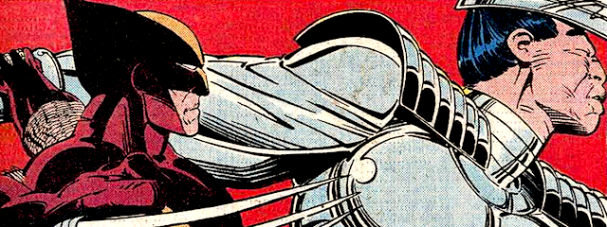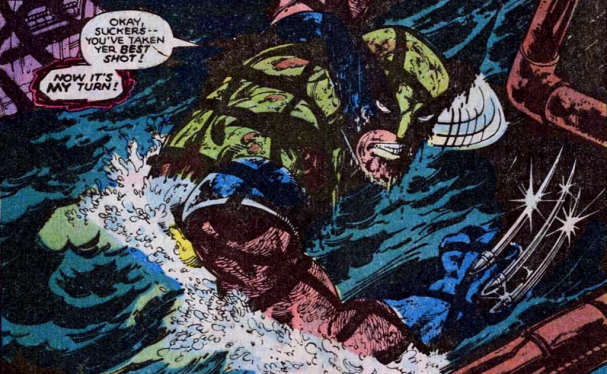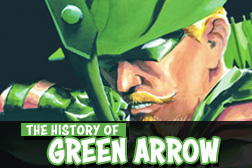First introduced in 1974 in the pages of The Incredible Hulk, he was introduced to the X-Men in the pages of Giant X-Men #1 in 1975, and soon became a staple of Chris Claremont‘s historic run that followed. Now the character is quite literally everywhere, occupying several of his own monthly titles, along with various X-Men and Avengers books and many, many films and animated TV series.
With The Wolverine now a theatrical feature, audiences may be wanting to go back and check out some of the better comics that feature the character. Walking into a comics shop may cause some confusion, with Savage Wolverine, Wolverine & the X-Men, Wolverine, Wolverine in the Flesh and Wolverine MAX just some of the titles out this month.
So we thought we’d pick some of the best known stories from the last few decades with the character. Some stories are essential reads, others are more forgettable, but the ones we have selected here all stand out for one reason or another. It’s not a comprehensive list, but we think they are all worth reading at some stage in your personal comics journey.
Agree or disagree? Got a comment? Start a conversation below, or take it with you on Behind the Panel’s Facebook and Twitter!
If you are an iTunes user, subscribe to our weekly podcast free here and please leave us feedback.
Wolverine (1982)
 The opening line of this comic has become legend: “I’m the best there is at what I do, but what I do best isn’t very nice.” If the first solo title for the character isn’t enough to entice you, then perhaps its creative team will. Chris Claremont defined the modern versions of the X-Men, with his historic 17 year run on Uncanny X-Men. By 1982, it was time to give the popular character his own spotlight, and a chance to explore his previously hinted at Japanese influences. Joining him was Frank Miller, a writer/artist who had just finished his own major run on Daredevil, and was only a handful of years away from his creator-owned Ronin and his unquestionable masterpiece, The Dark Knight Returns. Working at the height of their powers, the duo crafted a four-issue story that perfectly encapsulates the pent-up rage and mystery that has always been the appeal of the Wolverine. Taken together with Uncanny X-Men #172-173 (with artist Paul Smith), this forms what is often referred to as “The Japan Saga”, for it is set almost entirely in that country. Indeed, the new film draws much inspiration from this run, including the appearance of the Silver Samurai (pictured above). Aside from Claremont’s tightly woven thriller story, Miller’s art is an example of some of his best layouts. The iconic shot of the titular warrior leaping out of a window while fighting off a horde of The Hand’s warriors is perhaps one of the most reprinted, but Miller entirely makes the character his own. This is a rough and tumble Logan, one that scares his true love Mariko and excites a new woman in his life. From the the opening sequences in which he fights a bear in the Canadian Rockies, to the thrilling concluding fights, this is a one-man war against his own animalistic nature. Guess who wins? Listen to our podcast covering this mini-series, with an exclusive interview with Claremont about the origins of this book.
The opening line of this comic has become legend: “I’m the best there is at what I do, but what I do best isn’t very nice.” If the first solo title for the character isn’t enough to entice you, then perhaps its creative team will. Chris Claremont defined the modern versions of the X-Men, with his historic 17 year run on Uncanny X-Men. By 1982, it was time to give the popular character his own spotlight, and a chance to explore his previously hinted at Japanese influences. Joining him was Frank Miller, a writer/artist who had just finished his own major run on Daredevil, and was only a handful of years away from his creator-owned Ronin and his unquestionable masterpiece, The Dark Knight Returns. Working at the height of their powers, the duo crafted a four-issue story that perfectly encapsulates the pent-up rage and mystery that has always been the appeal of the Wolverine. Taken together with Uncanny X-Men #172-173 (with artist Paul Smith), this forms what is often referred to as “The Japan Saga”, for it is set almost entirely in that country. Indeed, the new film draws much inspiration from this run, including the appearance of the Silver Samurai (pictured above). Aside from Claremont’s tightly woven thriller story, Miller’s art is an example of some of his best layouts. The iconic shot of the titular warrior leaping out of a window while fighting off a horde of The Hand’s warriors is perhaps one of the most reprinted, but Miller entirely makes the character his own. This is a rough and tumble Logan, one that scares his true love Mariko and excites a new woman in his life. From the the opening sequences in which he fights a bear in the Canadian Rockies, to the thrilling concluding fights, this is a one-man war against his own animalistic nature. Guess who wins? Listen to our podcast covering this mini-series, with an exclusive interview with Claremont about the origins of this book.
Kitty Pryde And Wolverine (1984)
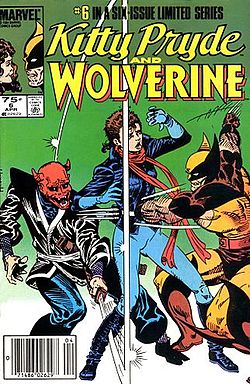 A few years after the initial Wolverine mini-series, Chris Claremont turned his eye to one of Marvel’s most popular characters and combined it with his own fondness for Kitty Pryde. In his introduction to the hardcover edition, artist Al Milgrom also listed it as a unique opportunity to work with Claremont, who was the most high profile writer at Marvel Comics at the time. It’s immediately a much grittier, street-level story for both characters, and featuring another return to Japan for Logan, along with an appearance from Yukio. As such, it’s another ‘Wolverine as ronin’ story that would go on to define the character further in the next decade or so, and here he takes on an unlikely mentor role long before he was a school teacher. It’s also a significant comic for Kitty Pryde, graduating from being the light-hearted “kid sister”, and eventually taking on her own costume and choosing the alias of “Shadowcat” by the end of the story. Milgrom’s unusual art style may not be for all tastes, but it fits the grittier style of storytelling Claremont was aiming for here. Curiously, despite the significance for both characters, this has only been reprinted once as the aforementioned 2008 hardcover edition.
A few years after the initial Wolverine mini-series, Chris Claremont turned his eye to one of Marvel’s most popular characters and combined it with his own fondness for Kitty Pryde. In his introduction to the hardcover edition, artist Al Milgrom also listed it as a unique opportunity to work with Claremont, who was the most high profile writer at Marvel Comics at the time. It’s immediately a much grittier, street-level story for both characters, and featuring another return to Japan for Logan, along with an appearance from Yukio. As such, it’s another ‘Wolverine as ronin’ story that would go on to define the character further in the next decade or so, and here he takes on an unlikely mentor role long before he was a school teacher. It’s also a significant comic for Kitty Pryde, graduating from being the light-hearted “kid sister”, and eventually taking on her own costume and choosing the alias of “Shadowcat” by the end of the story. Milgrom’s unusual art style may not be for all tastes, but it fits the grittier style of storytelling Claremont was aiming for here. Curiously, despite the significance for both characters, this has only been reprinted once as the aforementioned 2008 hardcover edition.
Weapon X (1991)
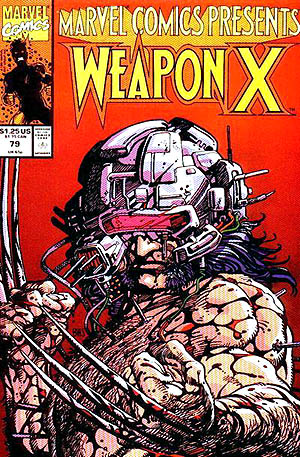 Barry Windsor-Smith’s unique story arc originally appeared in the pages of Marvel Comics Presents #72 through #84, telling the story of Logan’s time at the Weapon X program. It is only partly told from Wolverine’s perspective, and for the most part Logan is either being treated as a subject (as opposed to a human being) – by Professor, the director of the Weapon X program, and his assistants Dr. Cornelius and Miss Hines – or simply a mindless creature that has escaped into the wilderness. It is an intense story that journeys into horror movie territory, perhaps a first for the character, and something that filmgoers will have only seen in brief segments in the X-Men Origins: Wolverine and X-Men 2 films. The significance of this story in particular is that it was one of the first to really start to examine the origin story of Wolverine, a character that had been shrouded in mystery. Windsor-Smith’s artwork (he wrote, pencilled, inked, coloured, and co-lettered) is something else, often enveloping the hero in body horror mass of twisted wires, metal and flesh to the point that each is indistinguishable from the other. His influences from this series are incalculable. As a sidebar, if you want to see some of the work foreshadowing this series, go back to Uncanny X-Men #205 in which a recovering Wolverine is written by Claremont and drawn by Windsor-Smith. Weapon X is freely available as a TPB, but don’t make the mistake of accidentally picking up the similarly-titled Wolverine: Weapon X series by Jason Aaron.
Barry Windsor-Smith’s unique story arc originally appeared in the pages of Marvel Comics Presents #72 through #84, telling the story of Logan’s time at the Weapon X program. It is only partly told from Wolverine’s perspective, and for the most part Logan is either being treated as a subject (as opposed to a human being) – by Professor, the director of the Weapon X program, and his assistants Dr. Cornelius and Miss Hines – or simply a mindless creature that has escaped into the wilderness. It is an intense story that journeys into horror movie territory, perhaps a first for the character, and something that filmgoers will have only seen in brief segments in the X-Men Origins: Wolverine and X-Men 2 films. The significance of this story in particular is that it was one of the first to really start to examine the origin story of Wolverine, a character that had been shrouded in mystery. Windsor-Smith’s artwork (he wrote, pencilled, inked, coloured, and co-lettered) is something else, often enveloping the hero in body horror mass of twisted wires, metal and flesh to the point that each is indistinguishable from the other. His influences from this series are incalculable. As a sidebar, if you want to see some of the work foreshadowing this series, go back to Uncanny X-Men #205 in which a recovering Wolverine is written by Claremont and drawn by Windsor-Smith. Weapon X is freely available as a TPB, but don’t make the mistake of accidentally picking up the similarly-titled Wolverine: Weapon X series by Jason Aaron.
Wolverine: Origin (2006)
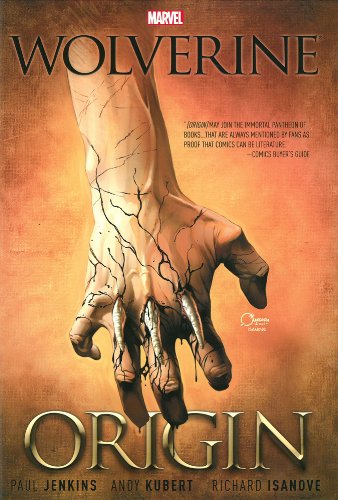 The title says it all. Revealing Marvel’s massive mystery could have been their biggest bungle, but it was a gamble then editor-in-chief Joe Quesada was willing to take. Together with Bill Jemas and Paul Jenkins, the trio crafted a story that took us back to Wolverine’s earliest days, as a sickly child in Canada named James Hewlett, that would grow to one day run with the wolves. With a script by Jenkins, this was a massive deal back in 2006, with audiences just as hungry for Logan’s back-story as the character himself. Jenkins takes his time over the course of the six issues, playing with the reader somewhat in the first issue before dropping the big revelation in the final panels of the second. It is this delaying of immediate satisfaction that makes the reveal of this secret all the more tangible. Many of the characters were early representations of counterparts that would become key to Logan’s mythology: Smitty had parallels to Cyclops, Dog Logan with Sabretooth and Rose naturally gave us a reason as to why the clawed one had an affinity towards redheads. These representations are lovingly detailed in Andy Kubert‘s jaw-droppingly beautiful artwork, lavishly coloured by Richard Isanove. The Tom Sawyer/Call of the Wild-esque beauty is contrasted by the sickeningly cool image of Logan’s bone claws popping out of his skin for the first time, a terrifying and satisfying moment for long-term and new readers alike. The legacy of this series is strong: not only was the opening to X-Men Origins: Wolverine film based on this series, but a sequel was announced this month. Wolverine: Origin II will be written by Kieron Gillen with art by Adam Kubert, the brother of the original artist.
The title says it all. Revealing Marvel’s massive mystery could have been their biggest bungle, but it was a gamble then editor-in-chief Joe Quesada was willing to take. Together with Bill Jemas and Paul Jenkins, the trio crafted a story that took us back to Wolverine’s earliest days, as a sickly child in Canada named James Hewlett, that would grow to one day run with the wolves. With a script by Jenkins, this was a massive deal back in 2006, with audiences just as hungry for Logan’s back-story as the character himself. Jenkins takes his time over the course of the six issues, playing with the reader somewhat in the first issue before dropping the big revelation in the final panels of the second. It is this delaying of immediate satisfaction that makes the reveal of this secret all the more tangible. Many of the characters were early representations of counterparts that would become key to Logan’s mythology: Smitty had parallels to Cyclops, Dog Logan with Sabretooth and Rose naturally gave us a reason as to why the clawed one had an affinity towards redheads. These representations are lovingly detailed in Andy Kubert‘s jaw-droppingly beautiful artwork, lavishly coloured by Richard Isanove. The Tom Sawyer/Call of the Wild-esque beauty is contrasted by the sickeningly cool image of Logan’s bone claws popping out of his skin for the first time, a terrifying and satisfying moment for long-term and new readers alike. The legacy of this series is strong: not only was the opening to X-Men Origins: Wolverine film based on this series, but a sequel was announced this month. Wolverine: Origin II will be written by Kieron Gillen with art by Adam Kubert, the brother of the original artist.
Wolverine: Logan (2008)
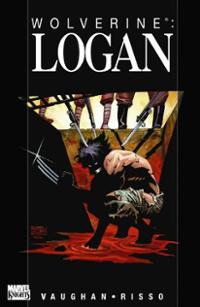 While this may not be one of the more famous runs, and at a humble 3 issues, it may barely register on some radars. However, it is difficult to overlook a Wolverine book by Brian K. Vaughan and Eduardo Risso, two creators who were literally hitting the peak of their creative strides. This series will be interesting to those who enjoy The Wolverine film, as it partly follows (via flashback) Wolverine’s adventures in Japan during the Second World War. At the time, one of the nuclear bombs being dropped on top of Logan seemed somewhat ridiculous, but they did in the film and it kind of works. The series came out of the fallout from the House of M, and Wolverine remembered all of his sordid history prior to adamantium being added to his skeleton. The series accounts for much of Logan’s familiarity with Japan and Japanese culture, and is another great puzzle piece following Wolverine: Origin. He also fights a radioactive immortal mutant, so it is fair to say that the film swings between one extreme and the next. Risso, getting towards the end of 100 Bullets, provides a heavily inked and distinctive set of art, some of the most unique to frame the character. If you can’t find it in singles or digitally, there’s also a trade paperback available for under $15. Well worth a look.
While this may not be one of the more famous runs, and at a humble 3 issues, it may barely register on some radars. However, it is difficult to overlook a Wolverine book by Brian K. Vaughan and Eduardo Risso, two creators who were literally hitting the peak of their creative strides. This series will be interesting to those who enjoy The Wolverine film, as it partly follows (via flashback) Wolverine’s adventures in Japan during the Second World War. At the time, one of the nuclear bombs being dropped on top of Logan seemed somewhat ridiculous, but they did in the film and it kind of works. The series came out of the fallout from the House of M, and Wolverine remembered all of his sordid history prior to adamantium being added to his skeleton. The series accounts for much of Logan’s familiarity with Japan and Japanese culture, and is another great puzzle piece following Wolverine: Origin. He also fights a radioactive immortal mutant, so it is fair to say that the film swings between one extreme and the next. Risso, getting towards the end of 100 Bullets, provides a heavily inked and distinctive set of art, some of the most unique to frame the character. If you can’t find it in singles or digitally, there’s also a trade paperback available for under $15. Well worth a look.
Old Man Logan (2008-2009)
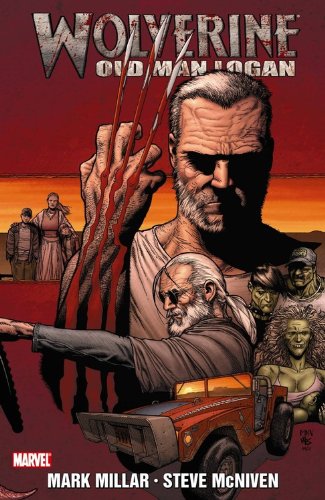 One of the most unlikely Wolverine stories turned out to be one of the most acclaimed as well. Modern master Mark Millar originally presented this tale in the pages of Wolverine #66 through #72, ending it over a year later in Wolverine Giant-Size Old Man Logan. Set over 50 years in the future of the Marvel universe, the United States has be carved up by supervillains, The country is run by the Abomination, Magneto, Dr. Doom and the Red Skull, who has named himself President. Logan has long since abandoned the mantle of “Wolverine”, refusing to pop his claws for any reason. Yet when he is asked by a now blind Hawkeye to take him across country, he is back in the game. Millar has played with these themes before, including in his creator-owned series Wanted, but here it is smack bang in the middle of a twisted version of the Marvel U. Steve McNiven follows Millar’s lead and portrays this as a Western, with bleak landscapes and having fun with the alternative versions of familiar characters. It’s a cinematic event, and should be read as a complete piece. If Hugh Jackman was ever going to retire from the character, it would be wonderful to see him come back to do a film like this for a rousing conclusion.
One of the most unlikely Wolverine stories turned out to be one of the most acclaimed as well. Modern master Mark Millar originally presented this tale in the pages of Wolverine #66 through #72, ending it over a year later in Wolverine Giant-Size Old Man Logan. Set over 50 years in the future of the Marvel universe, the United States has be carved up by supervillains, The country is run by the Abomination, Magneto, Dr. Doom and the Red Skull, who has named himself President. Logan has long since abandoned the mantle of “Wolverine”, refusing to pop his claws for any reason. Yet when he is asked by a now blind Hawkeye to take him across country, he is back in the game. Millar has played with these themes before, including in his creator-owned series Wanted, but here it is smack bang in the middle of a twisted version of the Marvel U. Steve McNiven follows Millar’s lead and portrays this as a Western, with bleak landscapes and having fun with the alternative versions of familiar characters. It’s a cinematic event, and should be read as a complete piece. If Hugh Jackman was ever going to retire from the character, it would be wonderful to see him come back to do a film like this for a rousing conclusion.
Bonus Pick: The Dark Phoenix Saga (1980)
 This is a significant story for the X-Men, one that we discussed in detail in our X-Men: The Phoenix Saga/The Dark Phoenix Saga/Days of Future Past episode of the podcast. Yet it contained so many classic Wolverine moments long before the character reached iconic status, and it just might be one of the reason why the character is so enduring. The saga spans Uncanny X-Men #129 to #138, but things really kick into high gear for the Wolverine at the iconic end to #132 (“And Hellfire Is Their Name!”), as a beaten down Wolverine emerges from the sewers with the immortal line “Now it’s my turn!” This panel alone should ensure the inclusion of this saga on any list of must-read Wolverine stories. This leads directly into #133 (“Wolverine Alone”), in which the titular figure handily slices and dices his way through the Hellfire Club, perhaps the first time we had seen him in full beserker flight on this scale. Let’s face it: if you’re a Wolverine fan or X-Men fan and you haven’t read this run of comics, you need to get thee to a comic bookery right now and get some Comics 101 into you. The film X-Men: The Last Stand majorly botched the fate of Jean Grey (who does appear in The Wolverine), so go back and see how it was done right in a time when a death in comics meant something.
This is a significant story for the X-Men, one that we discussed in detail in our X-Men: The Phoenix Saga/The Dark Phoenix Saga/Days of Future Past episode of the podcast. Yet it contained so many classic Wolverine moments long before the character reached iconic status, and it just might be one of the reason why the character is so enduring. The saga spans Uncanny X-Men #129 to #138, but things really kick into high gear for the Wolverine at the iconic end to #132 (“And Hellfire Is Their Name!”), as a beaten down Wolverine emerges from the sewers with the immortal line “Now it’s my turn!” This panel alone should ensure the inclusion of this saga on any list of must-read Wolverine stories. This leads directly into #133 (“Wolverine Alone”), in which the titular figure handily slices and dices his way through the Hellfire Club, perhaps the first time we had seen him in full beserker flight on this scale. Let’s face it: if you’re a Wolverine fan or X-Men fan and you haven’t read this run of comics, you need to get thee to a comic bookery right now and get some Comics 101 into you. The film X-Men: The Last Stand majorly botched the fate of Jean Grey (who does appear in The Wolverine), so go back and see how it was done right in a time when a death in comics meant something.

